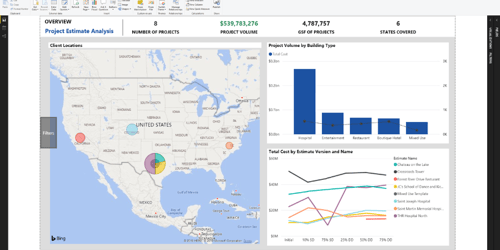Navigating Owner Goals: Aligning Preconstruction with Business Objectives
Preconstruction is a crucial step of the construction process where building pros connect the dots from project planning to on-site construction by refining project ideas, selecting the building team of subs and specialty trades, and analyzing and mitigating risk.
As crucial as preconstruction is, this phase also faces tough alignment hurdles between project goals and business objectives, such as budget constraints, time pressure, and scope creep. Oh, and not to mention, keeping the project owner and project team focused and moving in the same direction.
We are going to explore how preconstruction can understand the project owner’s goals, the nuance of aligning project goals, and the challenges and solutions of achieving alignment.
Understanding Owner Goals
One of preconstruction’s superpowers is being able to grasp the big picture of a project. This comes from experience and understanding the project owner’s vision for their project. The best precon pros dive into the purpose and desired outcome of the project through interactions with the project owner. 
These interactions lead to understanding and integrating the purpose of the project that likely goes beyond the physical structure. It could include sustainability practices, community impact, or innovation. Weaving the project purpose into planning, design, and execution helps prioritize what’s most important to the owner throughout the project team.
Preconstruction teams often evaluate design alternatives, cost implications, and construction methods with the owner’s goals in mind. These goals could include ROI, asset value, or operational efficiency. The precon teams make informed recommendations to the project owner that balance short-term project needs with long-term objectives.
So how does a precon team understand owner goals to this level of detail? Answer: effective communication with the project owner. It involves proactive engagement and being purposeful to understand what is most important to the owner for their project. It is a regular cadence of feedback loops so the project owner is made aware of preconstruction progress and the team can share insights that help guide project decisions.
Aligning Project Goals
The three top-of-mind project goals that the contractor and the project owner share are cost management, schedule alignment, and quality assurance.
Cost Management
The business objective sounds like “stay within budget." The project goal would then be “cost-effective construction.” To accomplish this project goal, preconstruction teams can explore value engineering options to reduce costs without impacting quality. Additionally, a lifecycle cost analysis on long-term facility maintenance costs can help make well-informed construction decisions early in the planning phase. Also, risk mitigation is a solid tactic to pinpoint cost overruns proactively.
Schedule Alignment
The business objective sounds like “complete construction on time.” The project goal could be “an efficient and realistic construction timeline.” One of the strategies to combat an expanding timeline is conducting critical path analysis. Identifying tasks critical to project duration will help the project team understand what items can’t budge on a deadline and to make those priorities. Another strategy is implementing lean construction principles. Streamlining processes minimizes delays and creates a more efficient project site. Buffer management is another tactic that most preconstruction teams already do for projects. It allocates time buffers for unexpected delays.
Quality Assurance
The business objective sounds like “maintain a favorable reputation and increase customer satisfaction.” The project goal could be “high-quality construction.” Quality control plans define standards and inspection processes. This should be part of preconstruction’s standard operating procedures for every project and communicated to the project owner regularly. Benchmarking project quality against industry standards also helps to communicate the focus on quality within your team and project.
Challenges and Solutions of Achieving Alignment 
The reality and complexity of construction projects pose a lot of challenges that are not easily solved. For example, preconstruction teams (especially those not using DESTINI Estimator estimating software) have a difficult time accessing historical estimating data and the accuracy of that data is sketchy at best. When a preconstruction team wants to show project options and have fruitful conversations with project owners about options they are going to struggle with defending their numbers. Using a platform like DESTINI does the heavy data lifting and analysis for the team. So precon pros can spend less time hunting for numbers and more time earning the project owner’s trust.
Alignment is an ongoing endeavor across the construction industry. Meeting a project owner’s expectations helps win repeat work. Winning repeat work leads to attracting and retaining construction talent. That talent needs to know how to align business objectives with project owner goals. The cycle is continuous. We can create a more successful construction industry through alignment.

-1.png?width=112&height=112&name=image%20(4)-1.png)














